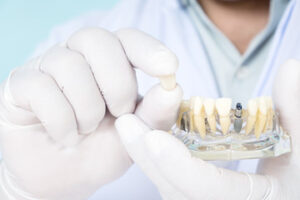The dental industry is one of the industries that benefits most from an effective SEO process. The right dental marketing strategy can increase visibility and attract patients who need immediate care. While many dentists rely on traditional marketing methods like word of mouth and referrals, the best way to get more patients is through SEO. Contact Lead Hounds now!
SEO for dentists focuses on improving a dental practice’s website and online presence to attract more patients. It involves a number of different factors, including keyword research and content marketing. The best way to get started is by identifying the keywords that potential patients are using to search for services in your area. Then, you can create web pages and blog posts that target these keywords. Keep in mind that it is important to use the right keywords, as they should be relevant to your dental services. It is also important to make sure that your website loads quickly and easily. This will ensure that search engines can find the information they need and rank it highly in SERPs.

Local SEO for dentists is a subset of SEO that focuses on a dental practice’s local presence. It includes optimizing the Google business profile, social media profiles and website for local search rankings. It also involves implementing schema markup to improve the quality of snippets and increasing user engagement. It is recommended to update the website with fresh content regularly and incorporate internal links to related pages. For example, a dental clinic might link from a dental services page to an article about oral hygiene or a blog post about common tooth problems.
SEO strategies for dentists can help a dental practice reach new patients by improving their search engine ranking. When potential patients see your name at the top of search results, they are more likely to contact you for a consultation. This is especially true if other dentists in the area appear below your name on the search results. However, it is important to remember that ranking high in search engine results takes time and requires a lot of work.
SEO for dentists is a complex process that can take several months to complete. The first step is to conduct a thorough competitor analysis to identify the keywords that are most effective for your practice. It is also essential to analyze the keywords that are most difficult to rank for, and to understand how your competitors are performing. This will help you prioritize your keywords and create a successful strategy.
On-page optimization
As more people turn to search engines to find what they need, including dental services, effective digital marketing for dentists has become a must. By applying SEO, dentists can increase their visibility in relevant online searches and attract more patients. This is done by optimizing a website’s content, improving the site’s architecture, and creating a robust link building strategy. However, it is important to remember that SEO alone won’t guarantee success. In order to rank high in search engine results pages, you need to use targeted keywords that are relevant to your business. This is why it’s critical to do proper keyword research. It can help you understand what phrases your audience is using to look for dental services, as well as determine how competitive those terms are.
On-page optimization is an essential part of the seo process for dentists, and it involves making sure that your website’s content is aligned with users’ search queries. This includes keyword-rich page titles, meta descriptions, and URLs. It also includes ensuring that your site is mobile-friendly and that it is easy for visitors to navigate. On-page optimization can also involve writing informative and relevant blog posts. This helps establish your dentist’s authority in the industry and increases the likelihood of attracting new patients.
Another important aspect of on-page optimization is ensuring that your website loads quickly. It can be difficult to rank in search engine results pages if your website takes too long to load. This can be caused by a variety of factors, including slow hosting or large images. To improve your website’s speed, try running a speed test and fixing any issues that are identified.
Finally, on-page optimization can also involve establishing your dental practice’s credibility through online reviews. This can be accomplished by encouraging patients to leave positive reviews on your Google Business Profile, social media, and directories. It is also a good idea to include some negative reviews, as these can add authenticity and give your patients a sense of trust. This is especially true if you can address the issues in a professional manner.
Link building
A successful online dental marketing strategy starts with a great website. A dentist needs to make sure their site looks great on all devices and loads quickly. They also need to build a strong foundation of citations and local SEO. Once they have these basics down, they can focus on other areas of digital marketing for dentists.
Dental SEO is a multifaceted process that includes keyword research, on-page optimization, and link building. When done correctly, it can lead to higher search engine rankings and more free organic traffic. However, it’s important to be cautious when hiring an SEO company because many of them engage in risky practices that could get your website banned by Google. This is why it’s important to find a company that is experienced in SEO for dentists and understands how to avoid these risks.
It is crucial for a dental practice to have an accurate and up-to-date Google Business Profile. Google uses this information to determine whether a business is relevant to a specific search query. Additionally, the profile allows customers to learn about a dentist’s location, services, and hours.
In addition to Google Business profiles, dental practices should also create and claim other local listings, such as Bing Places. This will increase their visibility and help potential patients find them. Furthermore, they should also add a blog to their website and update it regularly with relevant content. This will improve their chances of appearing in the “Local Pack,” which can increase phone calls and leads by up to 57%.
Dental websites should use Schema markup to highlight important information in search results. This will allow users to easily find the information they need and will increase their click-through rates. It will also enable the website to display rich snippets in search results, which can be very helpful for new patients.
Another way to boost local SEO for dentists is by focusing on obtaining reviews from their existing clients. This can be done by asking them to leave a review on Google or Yelp after their treatment, or by posting links to these sites on social media. In addition to boosting search engine visibility, this will also increase patient trust and confidence.
Content creation
Whether you’re an established dental practice or a new dental startup, SEO is an essential element of your marketing strategy. This digital process involves optimizing a website and online footprint to increase visibility in relevant search results. Search engines crawl the internet and index its pages, then rank them based on relevance and other factors. A successful SEO strategy includes a combination of multiple factors, including keyword research, content creation, and local listings.
Using dental SEO is the best way to attract qualified traffic and convert potential patients into loyal patients. The digital landscape is constantly changing, so it’s important to stay current with the latest SEO trends and techniques. This will ensure that your practice is well-positioned to compete in the ever-growing market of search engine optimization for dentists.
In order to improve your dental practice’s ranking in search engine results, you need to create high-quality, informative content. This can be done through blog posts, in-depth articles, or even videos. The key is to find a topic that your audience will be interested in and create content that addresses their questions. The goal is to provide helpful information and build trust with your audience.
The most important aspect of SEO is quality content. This is true of any industry, but especially so for dental practices. When creating content, it’s essential to include your target keywords in the title and text of each page. This will help you improve your ranking in search engines, and it will also make it easier for patients to find your content.
Another important aspect of SEO is the site structure. A well-organized site is essential to your success, and it’s a critical part of a dentist’s SEO. This is because Google looks at a website’s structure to determine how it ranks in searches.
To improve the effectiveness of your SEO efforts, invest in continuing education and attend conferences or webinars about dental SEO. These events can teach you the latest in search engine optimization for dentists and provide networking opportunities with fellow marketers. In addition, you should make sure that your team is updated on the latest in SEO best practices, as this will help them keep up with the evolving digital landscape.
